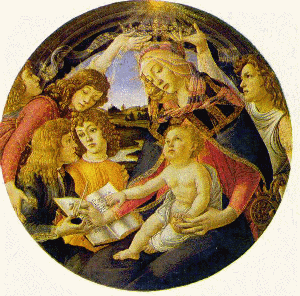Monocular Depth Cue Of Interposition


Textbooks use elementary images to illustrate many of the perceptual cues that give rise to the impression of depth. These images allow the reader to focus on one particular cue at a time and to see how the impression of depth arises from that cue lone. In fact, each topic in this tutorial is headed with a simple drawing illustrating the depth cue. For example, the first depth cue to be discussed hither is interposition which is the partial blocking of a more distant object by a nearer object. Check the small figure with the give-and-take interposition at the beginning of this page. There are 2 rectangles with the farther rectangle, lower and to the correct, partially obscured by the nearer 1, right? Well, actually both rectangles are at the same distance (the distance of the screen from your eyes). It is the interposition, overlap, that causes the sense of depth to arise. Usually the impression of depth acquired by interposition alone is not very strong.
 For some other illustration of interposition, look at the image below. Here are iii figures. They start out appearing at the same depth when they are not overlapped. When the move together to overlap, then they appear to exist a unlike depths, with the figure on the left appearing nearest.
For some other illustration of interposition, look at the image below. Here are iii figures. They start out appearing at the same depth when they are not overlapped. When the move together to overlap, then they appear to exist a unlike depths, with the figure on the left appearing nearest.
The virtue of studying depth cues in art rather than in simple drawings is seeing the cues in action, as it were. Only the amount of depth that is perceived is not relevant, i.e., the sole purpose of these elementary illustrations is to evidence that depth can be generated from the depth cue and not how that depth cue can exist used to depict a realistic depth scene. In art, on the other paw, the amount of depth that is perceived is extremely important. The representation of depth has a specific goal not constitute in the simple drawings. Take the case of interposition. Equally stated to a higher place, the impression of depth that generally arises from interposition is quite minimal, only when the depth range that is beingness depicted is quite small, overlap may become a very important depth cue as in the painting past Sandro Botticelli below:
 Madonna of the Magnificat by Sandro Botticelli. | Find the foreground figures, which are all that are important for our present purposes. Here relative size and even relative tiptop play piddling role in giving the depth order of the various figures (all the figures are roughly the same level and same size). Shadowing plays an important function in giving each of the figures their sense of three-dimensionality, simply to tell who is in what position relative to another, the principle cue is interposition. |
![]()
![]()
![]()
Monocular Depth Cue Of Interposition,
Source: https://psych.hanover.edu/krantz/art/inter.html
Posted by: gordonfastir.blogspot.com


0 Response to "Monocular Depth Cue Of Interposition"
Post a Comment